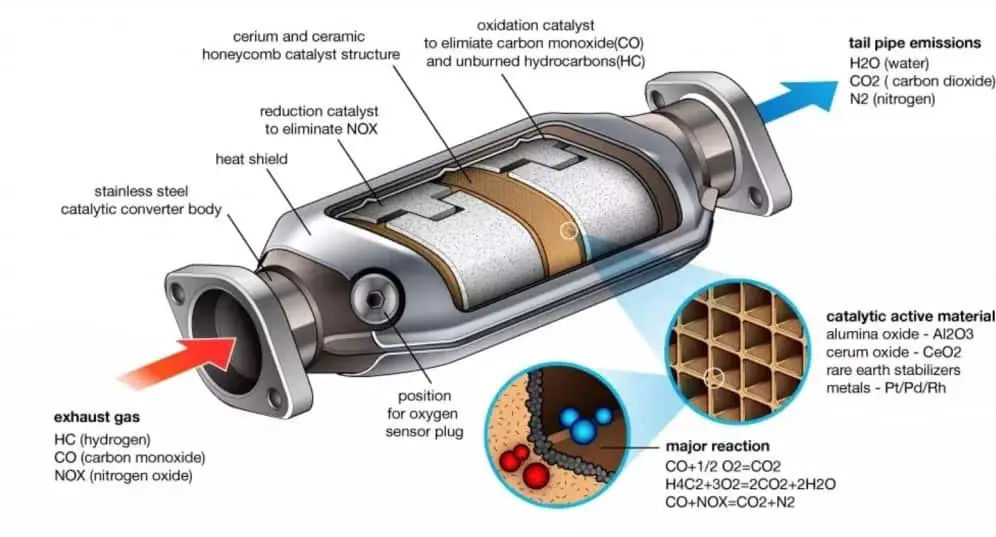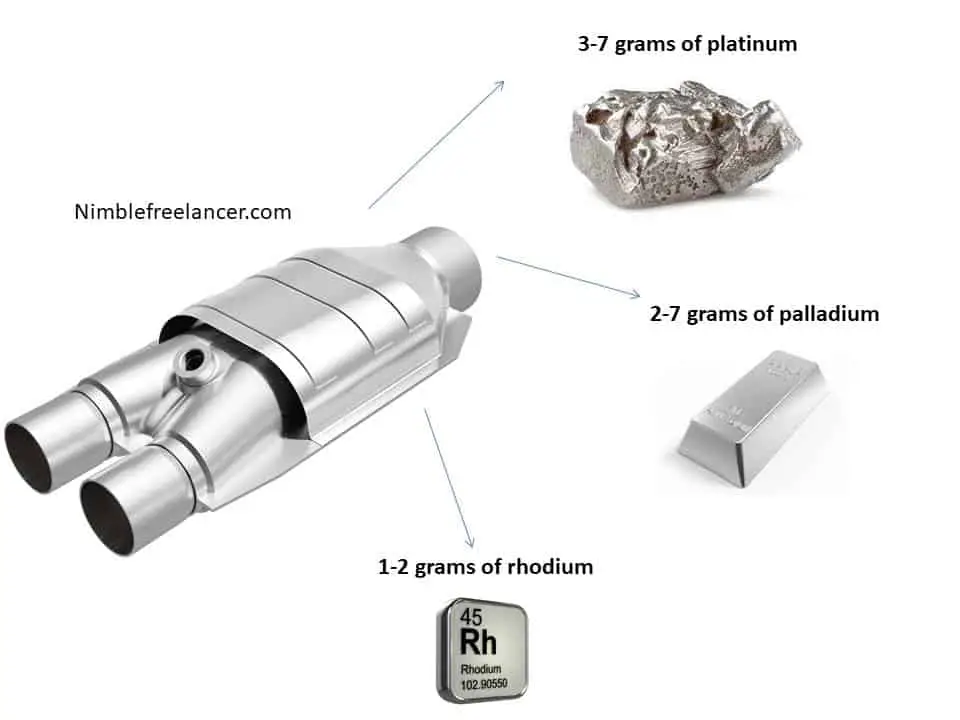A catalytic converter is essential to modern vehicle exhaust systems. It is designed to reduce harmful emissions and help keep the air clean. This device combines heat and chemical reactions to break down harmful gases like carbon monoxide and unburned hydrocarbons into less toxic byproducts.
Catalytic converters are typically found in internal combustion engines used in cars, trucks, motorcycles, boats, and many other vehicles. They can also be found in gas-powered appliances and devices, such as furnaces, stoves, and water heaters.

The primary purpose of a catalytic converter is to reduce the levels of harmful pollutants released into the atmosphere through the exhaust system. When exhaust passes through the converter, it comes into contact with a catalyst – usually a metal like platinum or palladium – which helps speed up a chemical reaction that converts dangerous pollutants into safer substances.
One challenge with catalytic converters is that they can become clogged over time due to build-up from the pollutants they process. However, most modern vehicle exhaust systems are designed with this issue in mind and include sensors that alert drivers when catalytic converters need servicing or replacement.
Catalytic converters are critical for maintaining a safe and healthy environment by reducing pollution from motor vehicles and other sources. Talk to an expert today if you want to learn more about this critical technology or install one on your car or appliance.
What precious metal is in a catalytic converter?
Catalytic converters contain one or more precious metals, such as platinum, rhodium, and palladium. The average catalytic converter includes 3-7 grams of platinum, 2-7 grams of palladium, and 1-2 grams of rhodium. These expensive metals are essential in reducing harmful pollutants released into the atmosphere.

One of the main reasons that catalytic converters contain precious metals is that they effectively reduce emissions from gasoline-powered engines. Platinum, rhodium, and palladium each have unique properties that make them particularly well-suited for this purpose. They are also relatively rare compared to other metals, making them expensive and valuable.
Because these precious metals are so effective at reducing emissions, they can be instrumental in combatting the effects of climate change caused by greenhouse gas emissions from automobiles. As our society continues to rely more heavily on mobile transportation for everyday activities, we must do all we can to protect the environment and keep our planet healthy for future generations.
So, if you have a car or other vehicle with a catalytic converter, take pride in knowing that it’s helping to protect our planet by containing one or more of these precious metals. If you’re looking for an investment vehicle that will not only hold its value but also contribute to a cleaner planet, consider purchasing physical coins or bars of platinum, rhodium, or palladium instead of stocks or bonds.
Why are precious metals used in a catalytic converter?
There are several reasons why precious metals are commonly used in catalytic converters. First and foremost, these metals are incredibly effective at reducing harmful pollutants like hydrocarbons, carbon monoxide, and nitrogen oxides. They can withstand the high temperatures within a car’s exhaust system and are durable enough to last a vehicle’s lifetime.
Furthermore, thanks to their unique chemical properties, precious metals can be used as catalysts when broken down into tiny nanoparticles. This allows only a small amount of precious metal to be utilized in the catalytic converter, making it an efficient and cost-effective solution for removing harmful pollutants from our air. Overall, using precious metals in catalytic converters can help protect our environment and improve the overall quality of life for people across the globe.
Why do thieves want to steal catalytic converters?
The thieves want to steal catalytic converters because of their high prices. The price of platinum is $920.00 per ounce, the cost of palladium is 64000 dollars per ounce, and $14000 is the price of rhodium per ounce.
Thieves are often interested in stealing catalytic converters because these components contain valuable metals like platinum and palladium. These precious metals can be sold for a significant profit on the black market, making catalytic converters a lucrative target for criminals. In addition to the high value of these materials, catalytic converters are often relatively easy to remove from vehicles and can be stolen quickly without attracting much attention.
The reasons behind this trend vary, but some experts believe that the growing popularity of precious metal recycling programs may be driving thieves to steal catalytic converters to obtain these materials. Other potential factors could include lax security measures at auto shops or concerns about rising gas prices, which may encourage drivers to remove their catalytic converters to save money on fuel costs.
To prevent your vehicle from being a target for catalytic converter theft, it is essential to take measures like installing anti-theft devices, parking in well-lit areas with surveillance cameras, and keeping your car in a garage or other secure location when not in use. Additionally, regularly monitoring your vehicle’s health and performance is essential, as unresponsive or sluggish engine behavior may indicate that a thief has targeted your vehicle’s catalytic converter. Overall, by taking proactive steps to protect your car from this type of crime and understanding why thieves want to steal catalytic converters, you can help ensure your safety and that of your vehicle.
Catalyst Converters theft in the US
Catalytic converters are a common target for thieves in the United States, as they contain precious metals that can be sold for a high price on the black market. These thefts often occur in areas where vehicles are parked overnight, as thieves can easily slip underneath and cut off the exposed catalytic converters using battery-powered saws.
One of the most commonly targeted vehicles is the Toyota Prius because it uses the highly coveted GD3 model catalytic converter. Other popular targets include the Chevy Trailblazer, which contains a catalytic converter that can fetch over $400 on the black market.
Many vehicle owners install security devices such as locks and alarms to prevent catalytic converter theft. Additionally, it is advisable to park your vehicle in well-lit areas where it will be more visible to passersby and potential thieves.
Whether you own an older or newer vehicle, you must remain vigilant and take steps to protect your catalytic converter from theft. These measures can help keep your car safe from this costly and damaging crime.
In response to this growing problem, many states in the US have been working to enact stricter laws and harsher punishments for those caught stealing catalytic converters. These efforts have met with some success, but much work remains to curb this kind of theft fully.
One of the main challenges in fighting catalytic converter thefts is that prices for precious metals like platinum and palladium remain high, making them very valuable targets for criminals. As long as these prices stay high, many individuals will continue to try their luck at stealing catalytic converters despite increased legal consequences.
That said, we must continue to work together to help prevent catalytic converter thefts and punish those who partake in these illegal activities. Raising public awareness about this issue and increasing support for stricter legislation can help ensure that catalytic converter thefts are reduced over time.
If you want to invest in precious metals, read our article on Augusta Precious Metals.
